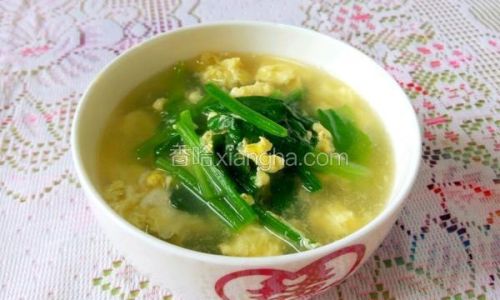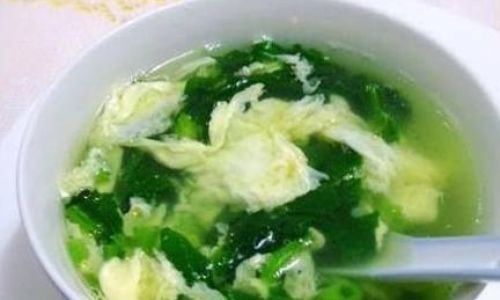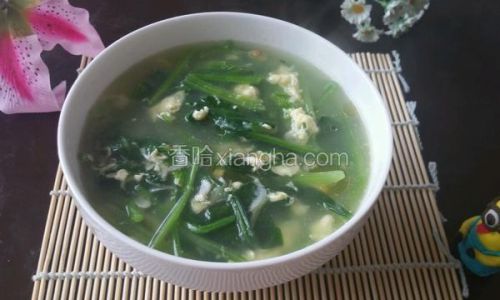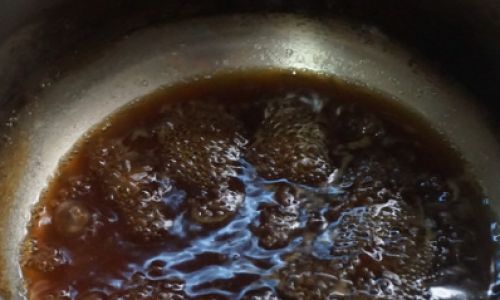Table of content
Spinach and egg soup, a humble yet versatile dish, has graced tables across the globe for centuries. Its simplicity belies its ability to delight the palate and nourish the body, making it a staple in home kitchens and restaurants alike. This article delves into the secrets of crafting a bowl of spinach and egg soup that is both comforting and gourmet, offering tips, techniques, and creative twists to elevate this classic recipe.
The Allure of Spinach and Egg Soup
At its core, spinach and egg soup is a celebration of minimalism. With just a handful of ingredients—fresh spinach, eggs, broth, and a few aromatics—it transforms ordinary elements into a harmonious blend of flavors and textures. The earthy sweetness of spinach pairs beautifully with the rich, velvety texture of eggs, while a fragrant broth ties everything together. Whether enjoyed as a light lunch, a restorative dinner, or a soothing remedy for colder months, this soup adapts to any occasion.
Beyond its culinary appeal, spinach and egg soup boasts impressive nutritional credentials. Spinach, a leafy green powerhouse, is packed with iron, vitamins A and C, and antioxidants. Eggs contribute protein and essential amino acids, while a low-sodium broth ensures the dish remains guilt-free. This combination makes it an ideal choice for health-conscious cooks seeking a balance between flavor and nourishment.

Ingredients: Quality Matters
To create a standout spinach and egg soup, start with the finest ingredients. Freshness is non-negotiable here, as each component plays a pivotal role in the final outcome.
- Spinach (300g): Opt for baby spinach leaves when possible, as they are tender and require minimal chopping. If using mature spinach, remove tough stems and rinse thoroughly to eliminate grit.
- Eggs (3 large): Free-range or organic eggs yield a richer flavor and vibrant yellow hue. Ensure they are at room temperature for smoother incorporation.
- Broth (1.5 liters): Choose a high-quality chicken, vegetable, or bone broth. Homemade broth adds depth, but store-bought varieties work well in a pinch. For a vegan twist, use mushroom or miso broth.
- Aromatics: A small onion, garlic cloves, or fresh ginger can elevate the soup’s complexity. Finely dice or mince these to avoid overpowering the dish.
- Seasonings: Salt, white pepper, and a splash of soy sauce or sesame oil enhance umami. Avoid black pepper, which can mar the soup’s clean appearance.
- Optional Add-Ins: Toasted sesame seeds, sliced green onions, or a drizzle of chili oil add texture and visual appeal.
Step-by-Step Preparation
Preparing the Spinach
Begin by washing the spinach leaves under cold running water. Gently pat them dry with a kitchen towel or use a salad spinner to remove excess moisture. Chop the leaves coarsely if desired, though small baby spinach leaves can be added whole for a rustic touch.
Pro Tip: For a vibrant green hue, blanch the spinach briefly in boiling water before adding it to the soup. This step also softens the leaves, reducing cooking time and preserving their color.
Crafting the Broth Base
In a large pot, heat a tablespoon of neutral oil (such as vegetable or canola) over medium heat. Sauté finely chopped onions, garlic, or ginger until fragrant but not browned—this should take 2–3 minutes. Pour in the broth and bring it to a gentle simmer. Season lightly with salt and white pepper, adjusting to taste later.
Variation: For a richer flavor, roast the aromatics before adding them to the broth. Caramelized onions or toasted garlic slices impart a depth that elevates the soup’s profile.

Mastering the Egg Ribbons
The key to a luxurious spinach and egg soup lies in the technique used to incorporate the eggs. Here’s how to achieve silken, feather-light ribbons:
- Whisk the Eggs: In a bowl, beat the eggs with a fork until the yolks and whites are fully combined. Avoid overmixing, as this can create a rubbery texture.
- Temperature Control: Ensure the broth is at a bare simmer—not boiling—when adding the eggs. High heat will cause the eggs to clump instead of forming delicate strands.
- Pour and Stir: Using a ladle or chopsticks, slowly pour the beaten eggs into the simmering broth in a thin, steady stream. Simultaneously, stir the broth gently in a circular motion to create wispy ribbons.
Pro Tip: For a visually stunning presentation, use a slotted spoon to swirl the eggs into the broth, creating delicate patterns.
Combining Elements
Once the egg ribbons are set (this takes 1–2 minutes), add the prepared spinach to the pot. Stir gently until the leaves wilt but retain their vibrant color—approximately 1 minute. Remove the pot from heat immediately to prevent overcooking.
Troubleshooting: If the eggs appear clumpy, reduce the heat next time and pour the mixture more slowly. Overcooked spinach can be remedied by blanching it separately before adding to the soup.
Finishing Touches
Adjust the seasoning with a splash of soy sauce or a drizzle of sesame oil. Ladle the soup into bowls and garnish with sliced green onions, toasted sesame seeds, or a pinch of chili flakes for a subtle kick.

Customization and Creativity
One of the joys of spinach and egg soup is its adaptability. Experiment with these variations to suit your taste or dietary needs:
- Protein Boost: Add cooked chicken, shrimp, or tofu cubes during the final simmer.
- Vegetable Medley: Incorporate mushrooms, carrots, or bell peppers for added crunch and nutrition.
- Noodle Twist: Stir in cooked rice noodles or udon for a heartier meal.
- Creamy Base: Blend a portion of the soup with a splash of coconut milk or heavy cream for a velvety texture.
Nutritional Benefits: A Bowl of Wellness
Beyond its delicious taste, spinach and egg soup offers a wealth of health benefits:
- Iron-Rich Spinach: A single serving provides a significant portion of your daily iron needs, supporting oxygen transport and energy levels.
- Protein Power: Eggs are a complete protein source, aiding muscle repair and satiety.
- Hydration: The broth base keeps you hydrated, making it an excellent choice for detox diets or post-illness recovery.
- Low in Calories: A generous bowl contains under 200 calories, making it ideal for weight management.
Cultural Context and Regional Variations
Spinach and egg soup transcends borders, with each culture adding its unique flair:
- Chinese Cuisine: Known as tang sui or egg drop soup, this version often includes cornstarch for thickening and a garnish of white pepper.
- Korean Adaptations: Sigeumchi-namul incorporates fermented bean paste (doenjang) and tofu for a hearty twist.
- Mediterranean Flavors: Some recipes add lemon juice, dill, or feta cheese for a bright, tangy finish.
Troubleshooting Common Pitfalls
Even seasoned cooks encounter hiccups. Here’s how to fix them:
- Cloudy Broth: Avoid boiling the soup vigorously after adding eggs. Maintain a gentle simmer.
- Bland Flavor: Enhance depth with a splash of fish sauce, miso, or a pinch of MSG (optional).
- Watery Consistency: Thicken with a cornstarch slurry (1 tsp cornstarch + 1 tbsp water) if desired.
The Perfect Pairing: Serving Suggestions
Spinach and egg soup shines when paired with complementary dishes:

- Crispy Spring Rolls: The contrast between the crunchy exterior and silken soup is divine.
- Steamed Rice: A small bowl of jasmine rice turns the soup into a satisfying meal.
- Pickled Vegetables: Tangy kimchi or pickled daikon adds a refreshing zing.
Conclusion: A Timeless Classic Reimagined
Spinach and egg soup is more than a recipe—it’s a canvas for culinary creativity. By mastering the basics and embracing experimentation, you can transform this humble dish into a showstopper. Whether you prefer it minimalist or loaded with toppings, one thing is certain: a well-executed bowl of spinach and egg soup has the power to nourish, comfort, and delight. So grab your apron, gather your ingredients, and let the magic unfold in your kitchen.





0 comments